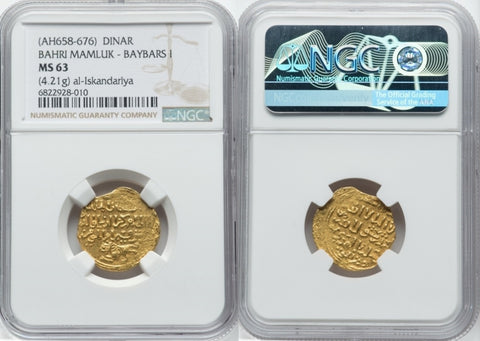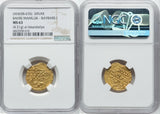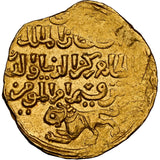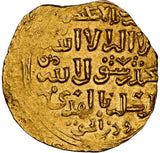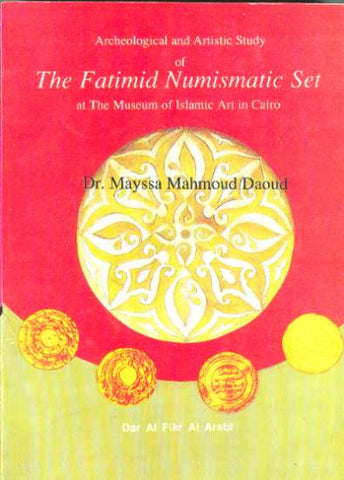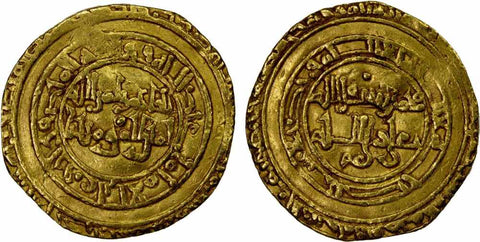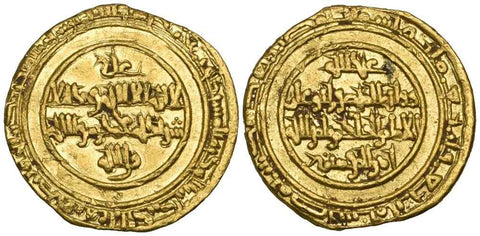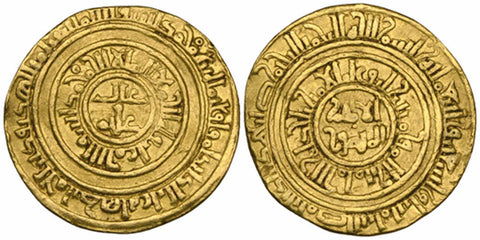1260-1277 AD Alexandria Egypt Islamic Coin Gold Dinar Mamluk Lion Baybars MS 63
Description: A gold coin from Baybars I (Al-Zahir Rukn Al-Din), who ruled Egypt and Syria during the period 658-676 AH (1260-1277 AD). Baybars is from the Bahari Mamluk dynasty. The coin shows the mint name as Al Iskandariya, current day Alexandria, the main port of Egypt originally built by the Alexander the great. The date of minting is missing. The coin has the famous Heraldic Lion Passant heading left on the obverse. The lion is visible and the coin is graded Mint State (MS63) by NGC and comes in a plastic slab so labeled. Please carefully review the scan as they are part and parcel of our description.
Date: Date off flan, struck in the period 658-676 AH (1260-1277 AD).
Mint: Minted in Alexandria Egypt.
Size and weight: This is a gold Dinar, weighs 4.21 grams (as noted on the slab) and is ~20 mm in diameter.
References: It is Album #880 and rates Rare and is listed in Wilkes as #959.
Condition: The coin is uncirculated and is graded by NGC as mint state 63. It is encased in a plastic slab so labeled. The coin is a bit of round and the flan is irregularly shaped. It also has areas of strike weakness. However, the legends are very readable and the heraldic lion is very distinct. A great coin to add to your collection. Please see photos for additional condition information.
Historic Perspective: The word Mamluks in Arabic means "owned", hence their nickname "Slave Kings". They succeeded the Ayyubids and ruled Egypt and Syria for about 250 years. They had been recruited by the Ayyubids and then, like the Turkish mercenaries of the Abbasid caliphs, had usurped power from their enfeebled masters. Unlike their predecessors, however, they were able to maintain their power, and they retained control of Egypt until the Ottoman conquest in 1517. Militarily formidable, they were also the first power to defeat the Mongols in open combat in 1260, at Ayn Jalut near Nazareth in Palestine. The Mamluk sultans are usually divided into two dynasties, the Bahris (1250 - 1382 AD), chiefly Turks and Mongols, and the Burjis (1382 - 1517 AD), chiefly Circassians. These names arise from the location of the barracks of the Mamluks within the city of Cairo (Al Kahira). Those originating from the barracks on an island in the Nile are Bahari (sea dwellers) and those who were in the towers are the Burjis (the tower dwellers). The Bahri sultans were usually selected from a few chief families, but during Burji times there was scant respect for hereditary principle in the selection of rulers. Neither dynasty was able to exercise more than a limited power over the turbulent Mamluk soldiers. The sultans reigned, on average, less than seven years and usually met violent ends. In spite of the dangers that threatened the sultans at home, they usually conducted a vigorous foreign policy. They defeated the last of the Crusaders and repulsed the Mongol invasion of Syria. At times they held all Palestine and Syria and the holy places of Arabia. Even after the Ottomans occupied Egypt they wheeled quite a bit of power until Mohammad Ali massacred the last of them at the Cairo Citadel in the early 1800's.

